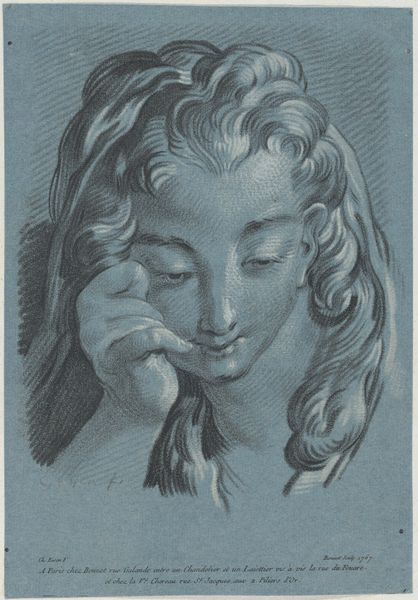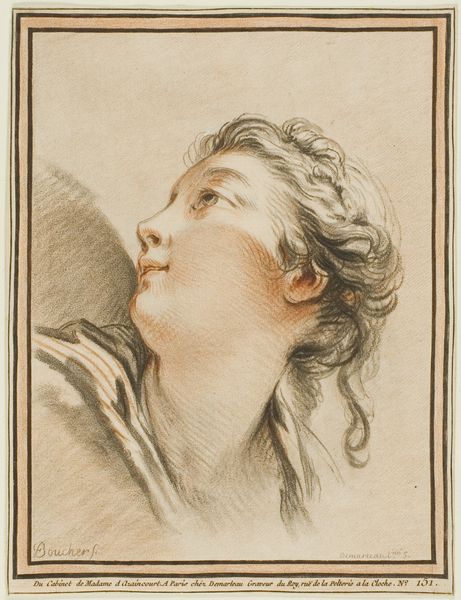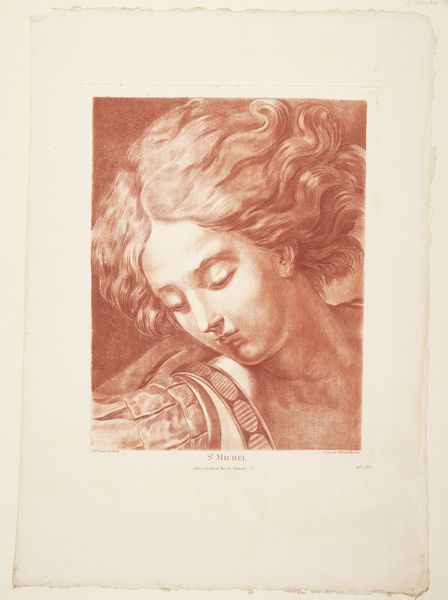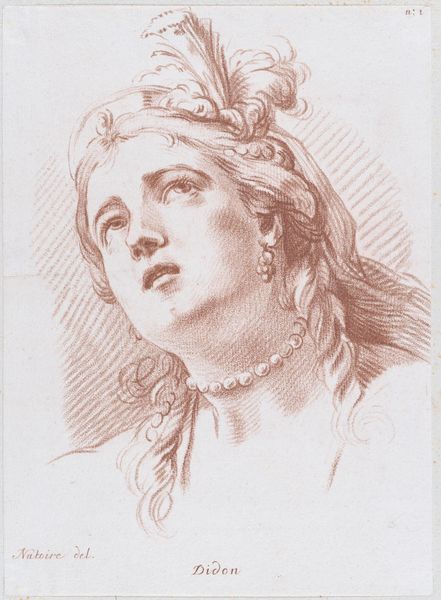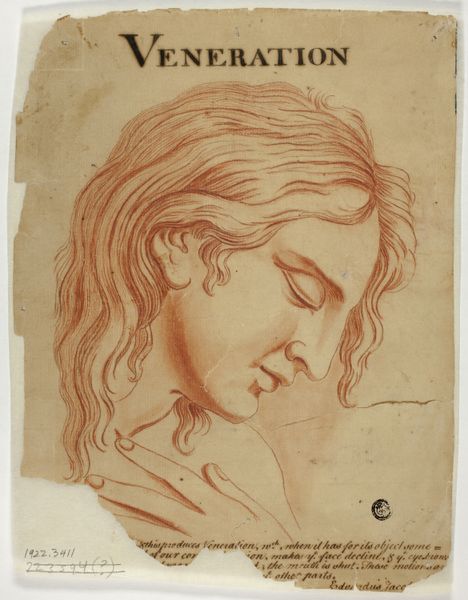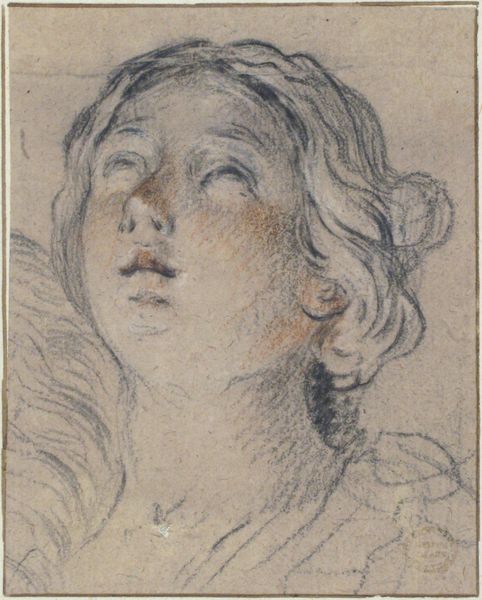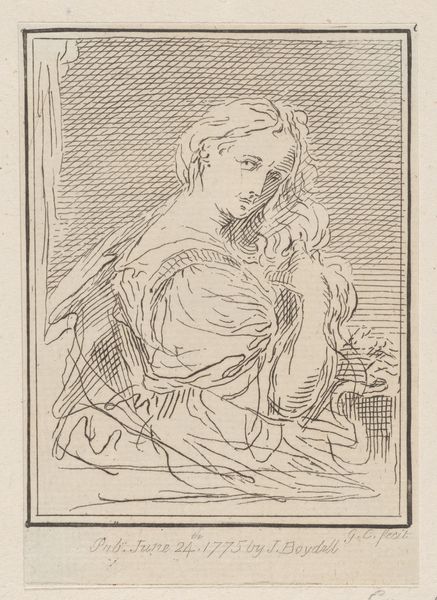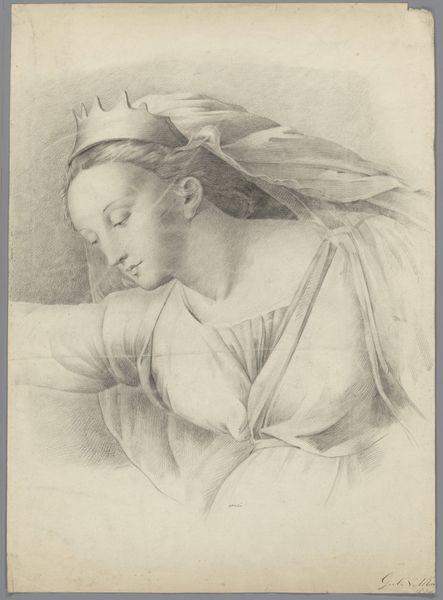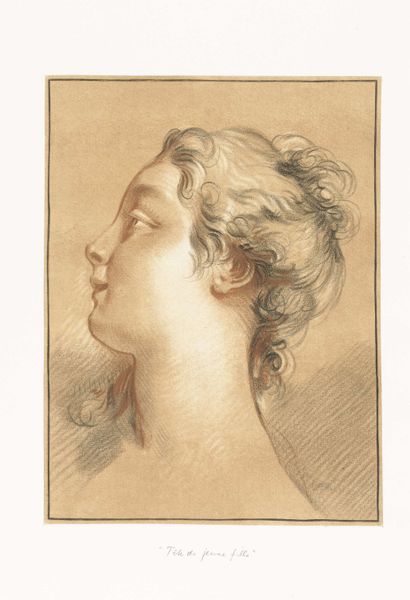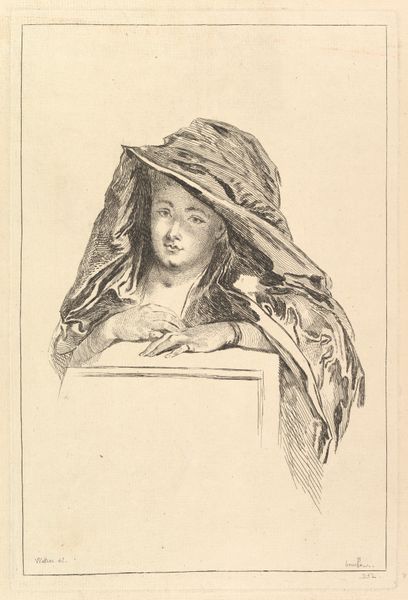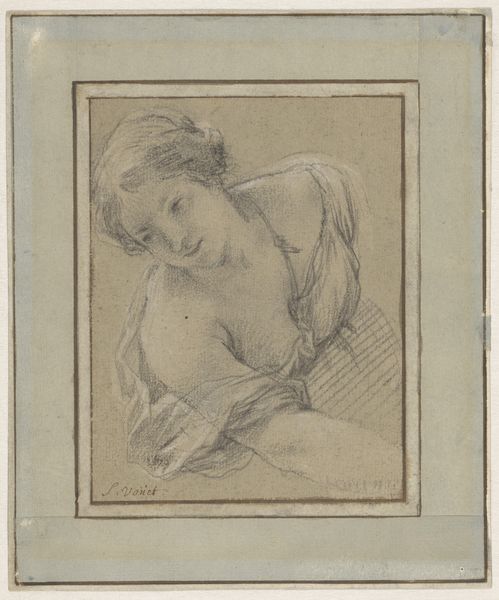
Dimensions: Sheet (trimmed): 10 7/8 × 7 1/2 in. (27.7 × 19 cm)
Copyright: Public Domain
Curator: Here we have Louis Marin Bonnet’s “Head of a Woman,” created in 1767. It's a print, achieved through etching and engraving techniques, now residing here at the Metropolitan Museum of Art. What strikes you most about this piece? Editor: The blue tones lend it a melancholy air, almost as if she's lost in contemplation. The angle creates intimacy, doesn’t it? Curator: Absolutely. The baroque style of portraiture often placed the sitter at a slight angle to elicit dynamism. And notice the direction of her gaze - downward and averted. Perhaps a symbolic rendering of feminine virtues like modesty? Editor: Maybe, but I see a woman burdened by the constraints of her time, her downcast eyes a silent rebellion against expectations of performance. The loose rendering of her hair suggests a yearning for freedom. Curator: An interesting point. Hair often signifies strength and individuality, and hers seems deliberately undone, refusing societal tidiness. It’s all tightly coiled at the back! I find such complex tension even in a seemingly simple portrait. Editor: Tension that permeates even its historical context. These intimate portraits often catered to an aristocratic, almost voyeuristic, consumption. This era saw an explosion of printed images for personal and political means. Curator: Indeed, portraits evolved, they took new forms; prints circulated rapidly and impacted public opinion. Bonnet’s technique imitates chalk drawings in its delicacy and is truly unique. Editor: This artwork, seemingly simple, opens complex discussions about societal expectations of gender and class. I love when an object makes you ponder its quiet resistances. Curator: Absolutely, and by reflecting upon our relationship with symbols, we can reconstruct ways of seeing which resonate with how those symbols impact cultural memory, allowing the viewer a continuous experience of cultural dialogue with the art. Editor: Very well said. I appreciate how this has deepened my understanding of female subjects of this period.
Comments
No comments
Be the first to comment and join the conversation on the ultimate creative platform.
